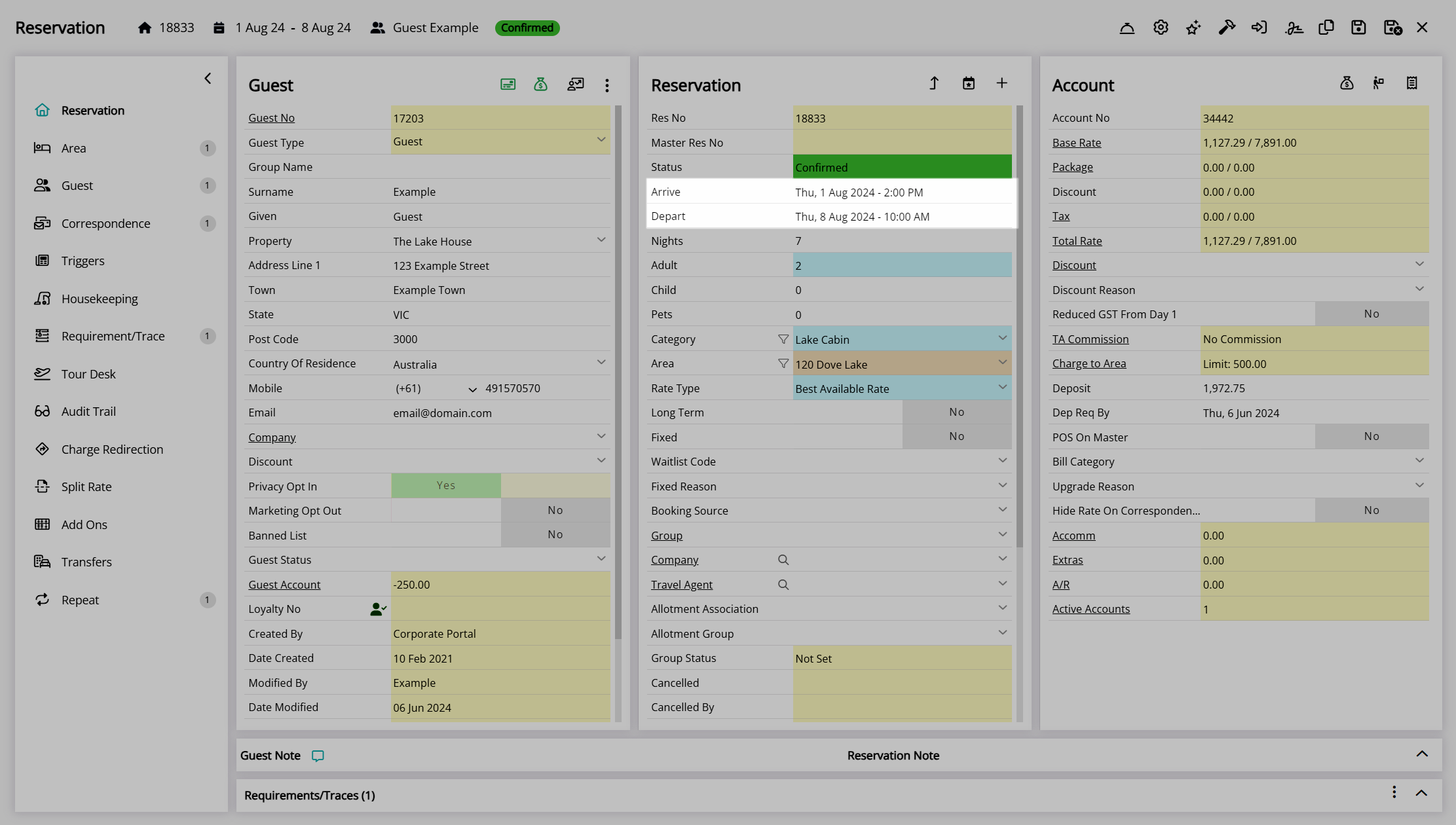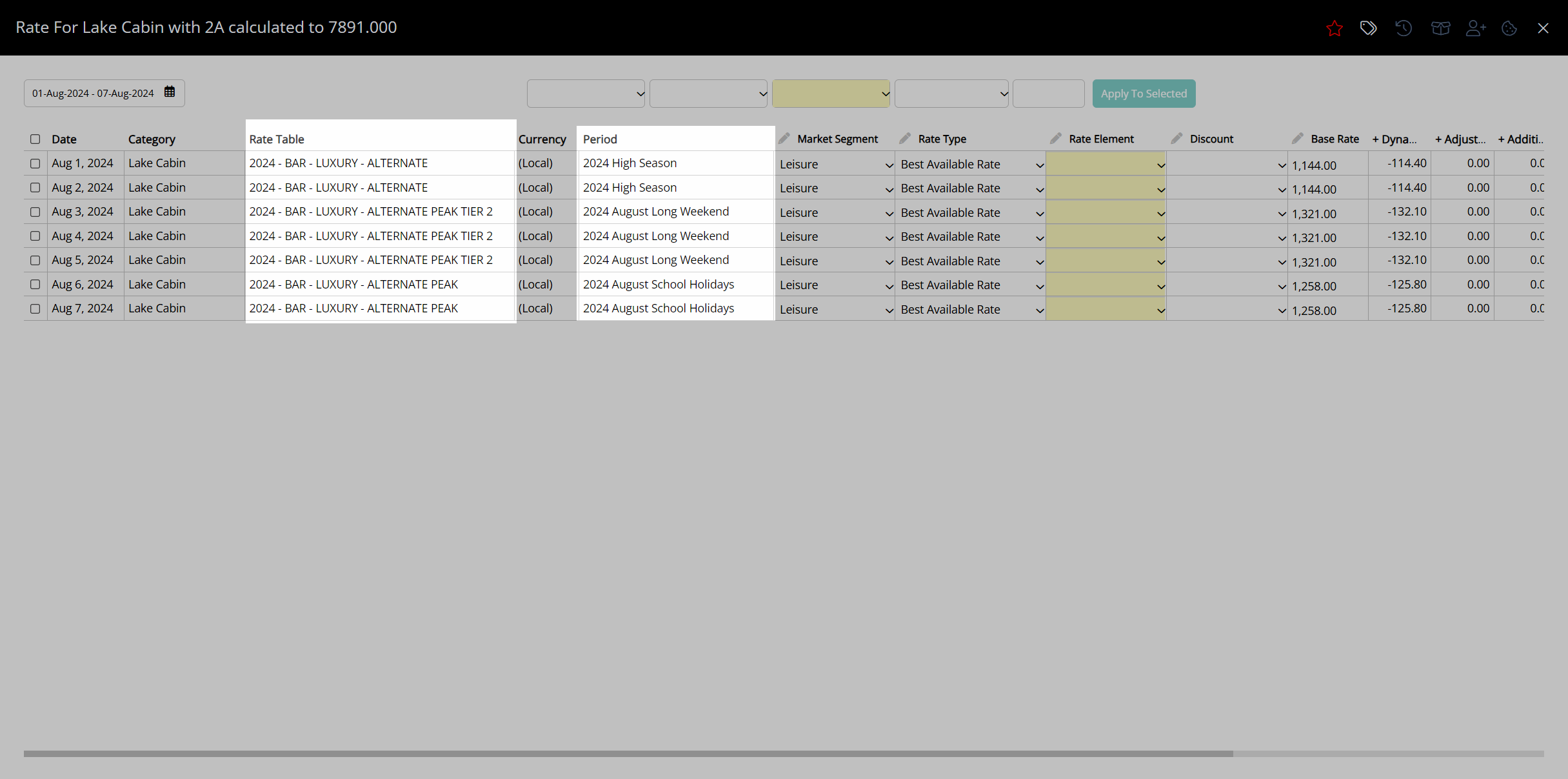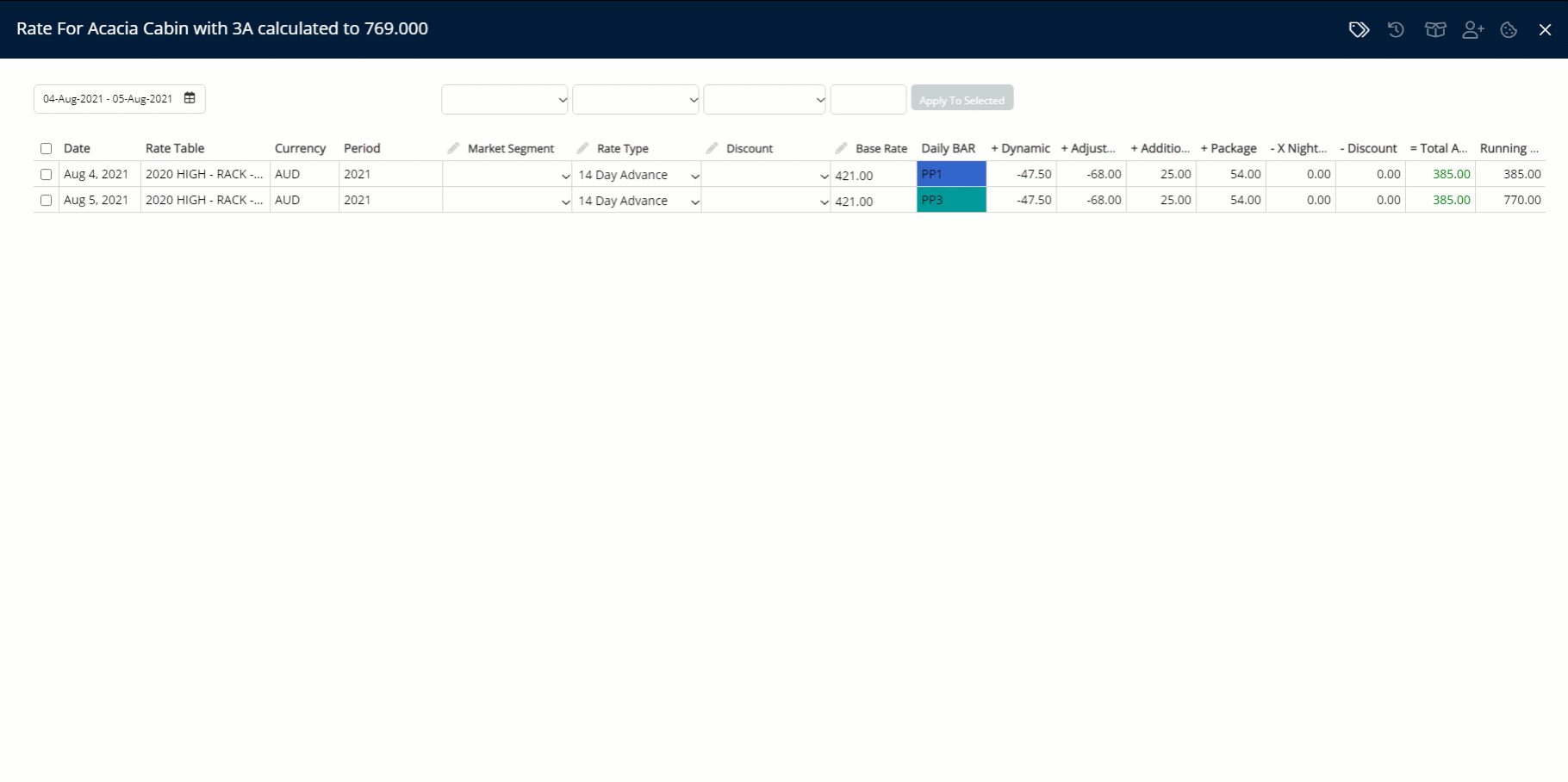Rate Hierarchy
Information on which rate rules take precedence when set up in RMS.
Table of Contents
Rate PeriodsCancellation PolicyDepositsLength of Stay RestrictionsRate Overrides & Rate AdjustmentsRates determine the pricing applied to a reservation and can be set up with many rules and validation conditions on multiple layers of the rate setup.
The Rate Hierarchy determines the order in which these rules and validation criteria apply to a reservation.
Each rate rule or validation criteria type has its hierarchy, determining which element is in effect when the same element exists on multiple layers of the rate setup.
Existing rules and validation criteria can also be manually overridden on a reservation or globally overridden using the Control Panel and available features on the Rate Manager.
Rate Periods
The availability of a rate is determined by the Rate Period selected in the Rate Lookup for a particular Rate Type, Rate Table, and property, category, or area combination.
Multiple Rate Lookups can exist with overlapping Rate Periods defining changes in price or validation criteria for shorter date ranges within a larger date range.
This method can set a base pricing structure across a season or period, with alternate pricing structures coming into and out of effect for selected dates.
The Rate Period Hierarchy determines which rate is available and which pricing structure is applied when multiple Rate Lookups have overlapping Rate Periods using the following rules:
- When multiple overlapping Rate Periods exist, the Rate Lookup with the shortest date range will take precedence.
- If multiple Rate Lookups have the same Rate Period linked to the same Rate Type, Category, and Rate Table combinations, the most recently created Rate Lookup will be used.
Unlike the other rate setup hierarchies that define which validation criteria are in effect, the Rate Period Hierarchy only determines the overall availability of a rate and which Rate Lookup takes precedence on a reservation stay date.
Example
Below is an example of how RMS determines which Rate Lookup applies to a reservation stay date when there are overlapping Rate Periods.
| August | |||||||||||||
| 1 | 2 | 3 | 4 | 5 | 6 | 7 | 8 | 9 | 10 | 11 | 12 | 13 | 14 |
| Long Weekend | |||||||||||||
| School Holidays | |||||||||||||
| High Season | |||||||||||||
A Rate Lookup has been created in RMS using a different Rate Table for each of the above periods.

The reservation below is arriving on 1st August and departing on 8th August and will cross over all three overlapping rate periods.

The Total Rate Breakdown on the reservation shows which Rate Lookup is used for each reservation stay date based on the overlapping Rate Periods.

Assigning a colour to each Rate Period can make it easier to identify which one is in effect when viewing rates on the Rate Manager.

Cancellation Policy
The Cancellation Policy applied to the reservation will be determined by the following hierarchy:
| Reservation1 | ||||||||||||||||
| Rate Type Control Panel Override | ||||||||||||||||
| Rate Type Property Rule | ||||||||||||||||
| Rate Period | ||||||||||||||||
| Rate Table | ||||||||||||||||
| Rate Type | ||||||||||||||||
| Derived Rate Type Control Panel Override | ||||||||||||||||
| Derived Rate Type Property Rule | ||||||||||||||||
| Derived Rate Type2 | ||||||||||||||||
1. Selecting or changing the cancellation policy on a reservation will ignore any policy selected on any rate setup.
2. A cancellation policy set on a Derived Rate will only apply if no cancellation policy is selected on the Rate Type or Derived Rate Type used as the 'Derived From'.
Deposits
The deposit rule used on a reservation will be determined by where the deposit rules are configured on the Rate setup using the following hierarchy:
| Reservation1 | ||||||||||||
| Rate Type Control Panel Override | ||||||||||||
| Rate Type Property Rule | ||||||||||||
| Rate Table | ||||||||||||
| Derived Rate Type Control Panel Override | ||||||||||||
| Derived Rate Type Property Rule | ||||||||||||
| Derived Rate Type2 | ||||||||||||
1. Mixed Rate Reservations will use the Rate Type Deposit with the highest value to determine the deposit due for the reservation.
2. A deposit policy set on a Derived Rate will only apply if no deposit policy is selected on the Rate Type or Derived Rate Type used as the 'Derived From'.
Length of Stay Restrictions
The Length of Stay Restrictions applicable to a rate will be determined by where they are setup in RMS.
Length of stay restrictions (LOS) can be applied to Rates at various levels with each level of restriction taking precedence over the previous layer.
Minimum and maximum length of stay restrictions can be setup in the following areas of RMS:
| Control Panel | ||||||||||||
| Rate Table | ||||||||||||
| Rate Period | ||||||||||||
| Rate Type Property Rule | ||||||||||||
| Derived Rate Type | ||||||||||||
| Rate Type | ||||||||||||
- Control Panel Override: Overrides any Length of Stay set in Rate Setup.
- Rate Table: Overrides Length of Stay set on the Rate Period, Derived Rate or Rate Type.
- Rate Period: Overrides Length of Stay set on the Derived Rate or Rate Type as well as any Property Rate Rules.
- Rate Type Property Rule: Overrides Length of Stay setup on the Derived Rate Type, Master Rate Type or Stand Alone Rate Type for the specific Properties setup for.
- Derived Rate Type: Overrides Length of Stay setup on the Master Rate Type if selected on Derived Rate Setup.
- Rate Type: Base level restriction that will not be applied if any overlaying restriction exists.
| Month | |||||
|---|---|---|---|---|---|
| 1st | 2nd | 3rd | 4th | 5th | 6th |
| Control Panel | |||||
| Rate Table | |||||
| Rate Period | |||||
| Rate Type Property Rule | |||||
| Derived Rate Type | |||||
| Rate Type | |||||
- Reservations arriving on the 1st would use the minimum and maximum length of stay set on the Rate Type.
- Reservations arriving on the 2nd would use the minimum and maximum length of stay set on the Derived Rate Type, if selected on setup to override the Master Rate Type.
- Reservations arriving on the 3rd would use the minimum and maximum length of stay set on the Property Rate Rules.
- Reservations arriving on the 4th would use the minimum and maximum length of stay set on the Rate Period.
- Reservations arriving on the 5th would use the minimum and maximum length of stay set on the Rate Table.
- Reservations arriving on the 6th would use the minimum and maximum length of stay set as an Override in the Control Panel or on the Rate Manager Chart.
MLOS (On Arrival) & Soft Close
A Minimum Length of Stay (On Arrival) requires guests reservations to be of a certain length if choosing to arrive on a day where a MLOS is set.
A Soft Close requires guests reservations to be of a certain length if the date the Soft Close is setup is included within their stay dates.
Where a combination of a MLOS (On Arrival) and a Soft Close are setup across the dates the guest reservation is being created, provided both have been setup optimally the guest's reservation will be required to adhere to both restrictions with the greater of the two applying.
| Month | |||||||||
|---|---|---|---|---|---|---|---|---|---|
| 1st | 2nd | 3rd | 4th | 5th | 6th | 7th | 8th | 9th | 10th |
| Soft Close - 4 Nights | |||||||||
| MLOS (On Arrival) - 3 Nights | |||||||||
- Reservations arriving 1st will be required to have a minimum stay of 3 nights due to the MLOS (On Arrival). They will be able to depart on 4th.
- Reservations arriving 2nd or 3rd will be required to have a minimum of 4 nights. The MLOS (On Arrival) prevents the guest departing prior to 4th when the Soft Close takes effect and requires the guest stay a minimum of 4 nights to include this date in their reservation.
Rate Overrides & Rate Adjustments
A rate override can be performed on the Rate Manager, in the Control Panel, or manually on a reservation.
Overriding the base rate will prompt RMS to ignore the rate setup tab on the Rate Table, including Dynamic Pricing.
Derived Rate Adjustments and any Rate Adjustments entered in the Control Panel or on the Rate Manager chart will also be ignored when a Rate Override is performed.
Additionals and Packages on the Rate Table will continue to be included in the total rate calculation after a rate override.
